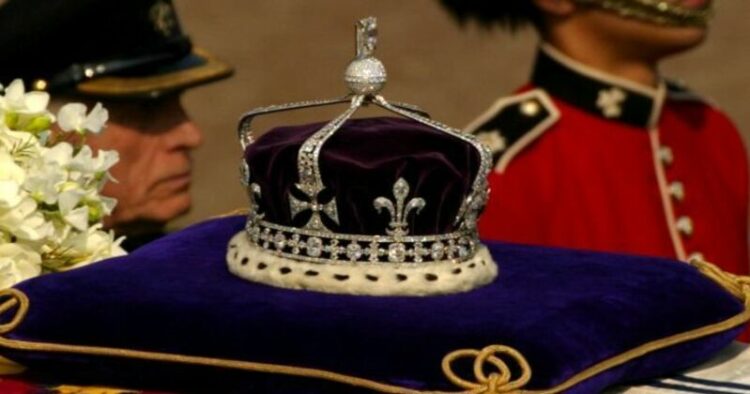London [UK]: As the news of Queen Elizabeth II’s demise made headlines, a new trend got popular on Twitter – #Kohinoor.
Netizens on Twitter demanded the UK give back the Kohinoor diamond to India. Many people believe the precious diamond, which is now mounted on the crown of the Queen, should be rightfully back in India.
Amidst all this, the one thing that’s getting highlighted is how the UK has a lot many things in possession that were either taken away or looted from other countries during their colonial reign. Here’s a list of a few of those items.
1. Great Star of Africa diamond
Amongst many prized possessions of the Queen, the ‘Great Star of Africa’ diamond clearly stands out. It is the world’s largest diamond and weighs around 530 carats. Estimated to be worth around USD 400 million, the Great Star of Africa was mined in South Africa in 1905. According to many historians from Africa, the jewel was mined in 1905 and was presented to Edward VII and they claim that the diamond was rather stolen or looted by the British government during their reign as colonists. The Great Star of Africa is currently in the Queen’s sceptre.
2. Tipu Sultan’s ring
Tipu Sultan’s ring was allegedly taken by the Britishers from his slain body in 1799 after he lost the battle against them. According to many media reports, the ring was sold at an auction in the UK to an unidentified bidder for around 1,45,000 British pounds.
3. Rosetta Stone
Amidst the call to bring Kohinoor back to India, Egyptian activists and archaeologists want to bring the Rosetta Stone back to its homeland i.e. Egypt. The Rosetta Stone is currently on display at the British Museum.
According to many local newspapers, archaeologists claim that they can prove that the Rosetta Stone was “stolen” by Britain. The Rosetta Stone dates back to 196 BC and according to historians, the famous stone was acquired by Britain after they won the battle against France in the 1800s.
4. Elgin Marbles
According to many media reports and archives in History, in 1803, Lord Elgin allegedly removed the marbles from the Parthenon’s decaying walls in Greece and transported them to London. This is also the reason those precious marbles are called Elgin Marbles.
Somehow the deep-rooted idea that colonisation was good for the colonised countries is a ridiculous concept. How can slavery and subjugation ever be beneficial to any nation? Shashi Tharoor in his viral speech at the Oxford Union pointed out the mindless greed and loot that took place in India by the British. Here are a few extracts:
- India share of the world economy when Britain arrived on it’s shores was 23 per cent, by the time the British left it was down to below 4 per cent.
- Britain’s rise for 200 years was financed by it’s depredations in India. In fact Britain’s industrial revolution was actually premised upon the de-industrialisation of India.
- The handloom weaver’s for example famed across the world whose products were exported around the world, Britain came right in. There were actually these weaver’s making fine muslin as light as woven wear, it was said, and Britain came right in, smashed their thumbs, broke their looms, imposed tariffs and duties on their cloth and products and started, of course, taking their raw material from India and shipping back manufactured cloth flooding the world’s markets with what became the products of the dark and satanic mills of the Victoria in England
- That meant that the weavers in India became beggars and India went from being a world famous exporter of finished cloth into an importer when from having 27 per cent of the world trade to less than 2 per cent.
- 15-29 million Indians died of starvation in British induced famines. The most famous example was, of course, was the great Bengal famine during the World War II when 4 million people died because Winston Churchill deliberately as a matter of written policy proceeded to divert essential supplies from civilians in Bengal to sturdy tummies and Europeans as reserve stockpiles.
In all frankness the colonisers can never return or compensate for their centuries of loot and brutalities but the return of certain items that are symbolic in nature can make a difference in the perception of things. (with inputs from ANI)



















Comments